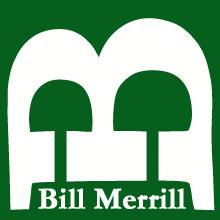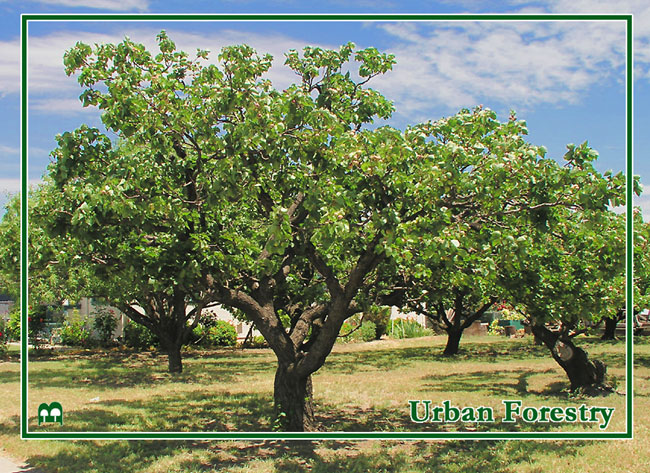

Why do people plant trees? The human motivation to engage in forestry is complicated but good environmental reasons for planting would include: oxygen production, energy conservation, and sequestering carbon. These reasons are important but the effects are not easily observed by the person planting the tree. Other more obvious and visible reasons would be to create shade and windbreak, to block a view or create a sound wall, to hold soil against erosion, and produce food. Very seldom do urban growers consider the lumber value of the trees they plant along the negative economic impacts.
Often people will seek out plants that grow as fast as possible. Humans seem to have a lack of faith in trees natural ability to grow. This lack of faith often results in the installation of a tree that becomes an overwhelming giant in less than 20 years. The price for failing to calculate the economic impact of our plantings is paid in expense to the homeowner caused by constant trimming or removal of the tree. The numbers of severely pruned or “topped” trees in this area are a testament to the lack of foresight and planning when they were planted.
A potential solution to maintenance cost is to plant trees with a consideration of the long term value in either produce or lumber. This concept is called urban forestry. Urban forestry is a school of thought beginning to come of age in the 21st century. In urban forestry a tree would be planted because it served all the usual functions plus it would either produce food or become lumber in 20 to 30 years. The lumber harvest would help sequester carbon as opposed to releasing CO2 in the atmosphere when we grind, compost or burn trees cut from urban areas. It will also remove some of the pressure placed on our Earth’s forests.
Excellent choices for urban forestry are trees with extremely valuable lumber like Hawaiian Koa, Black Walnut or Cherry. Lumber from urban trees is best used for applications like furniture, guitar wood or art objects where unusual grain patterns are highly desirable and quite valuable. Other good choices are trees that will produce high value crops through out their life span, like Avocado, Macadamia nuts or Limes. Trees that produce fruit that is hard to find in the market like White Sapote, Cherimoya, or Pawpaw are also good candidates for urban forestry plantings.
I can help you to create a landscape that increases in value annually rather than costing you expensive bills from tree trimming services. More information about backyard forestry is available at the Urban Forest Ecosystems Institute. http://www.ufei.org
